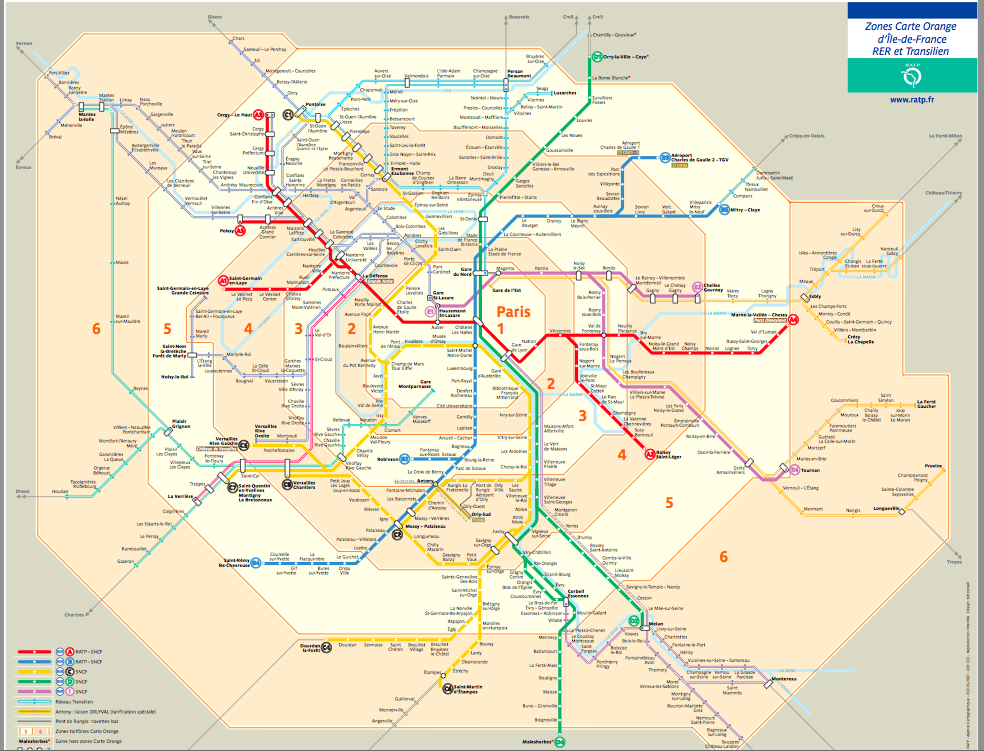M II A II R II K
Senior Member
Time-Based Versus Distance-Based Fares
October 22, 2010
By Jonna McKone
Read More: http://thecityfix.com/time-based-versus-distance-based-fares/
Time-based systems allow passengers to ride a transit system and make free transfers for a set amount of time. This scheme can be anything from an unlimited weekly pass to an unlimited monthly pass, to even shorter periods of time, such as a free transfer within a one- to two-hour time period. This pricing system requires some sort of card (paper, magnetic or smart card) to issue the transfer.
Distance-based systems charge higher fares for rides that cover greater distances. The fares could either be on a route-by-route basis, as we have in Washington, D.C., where the price between two points varies (here’s a nice run-down of the District’s pricing options), or a set of fare zones that could establish incremental fares based on certain regions of the city. For example, Paris has concentric circles that ring the city and form zone boundaries. Travel to the outer zones is more expensive than inner areas. Los Angeles’ Metrolink is much different—the system offers a daily pass for $6 and a preboard flat fare. The thought behind the distance-based scheme is that riders who use more service should pay for the service.
There are drawbacks to both systems. Distance-based fares often end up being more complicated to develop and enforce, as they require a card to be re- swiped, tapped or punched for bus or rail, or they require a barrier that reinforces additional payment.
The Los Angeles Metro system reviewed the pricing strategies of 244 North American transit services from data collected by the American Public Transportation Association (APTA). According to the findings, “some form of time-based pricing is offered on 32 of 244 systems with the most common form allowing unlimited transfers within the available time window (19 properties allow transfers within a 1 to 2 hour window).â€

October 22, 2010
By Jonna McKone
Read More: http://thecityfix.com/time-based-versus-distance-based-fares/
Time-based systems allow passengers to ride a transit system and make free transfers for a set amount of time. This scheme can be anything from an unlimited weekly pass to an unlimited monthly pass, to even shorter periods of time, such as a free transfer within a one- to two-hour time period. This pricing system requires some sort of card (paper, magnetic or smart card) to issue the transfer.
Distance-based systems charge higher fares for rides that cover greater distances. The fares could either be on a route-by-route basis, as we have in Washington, D.C., where the price between two points varies (here’s a nice run-down of the District’s pricing options), or a set of fare zones that could establish incremental fares based on certain regions of the city. For example, Paris has concentric circles that ring the city and form zone boundaries. Travel to the outer zones is more expensive than inner areas. Los Angeles’ Metrolink is much different—the system offers a daily pass for $6 and a preboard flat fare. The thought behind the distance-based scheme is that riders who use more service should pay for the service.
There are drawbacks to both systems. Distance-based fares often end up being more complicated to develop and enforce, as they require a card to be re- swiped, tapped or punched for bus or rail, or they require a barrier that reinforces additional payment.
The Los Angeles Metro system reviewed the pricing strategies of 244 North American transit services from data collected by the American Public Transportation Association (APTA). According to the findings, “some form of time-based pricing is offered on 32 of 244 systems with the most common form allowing unlimited transfers within the available time window (19 properties allow transfers within a 1 to 2 hour window).â€





